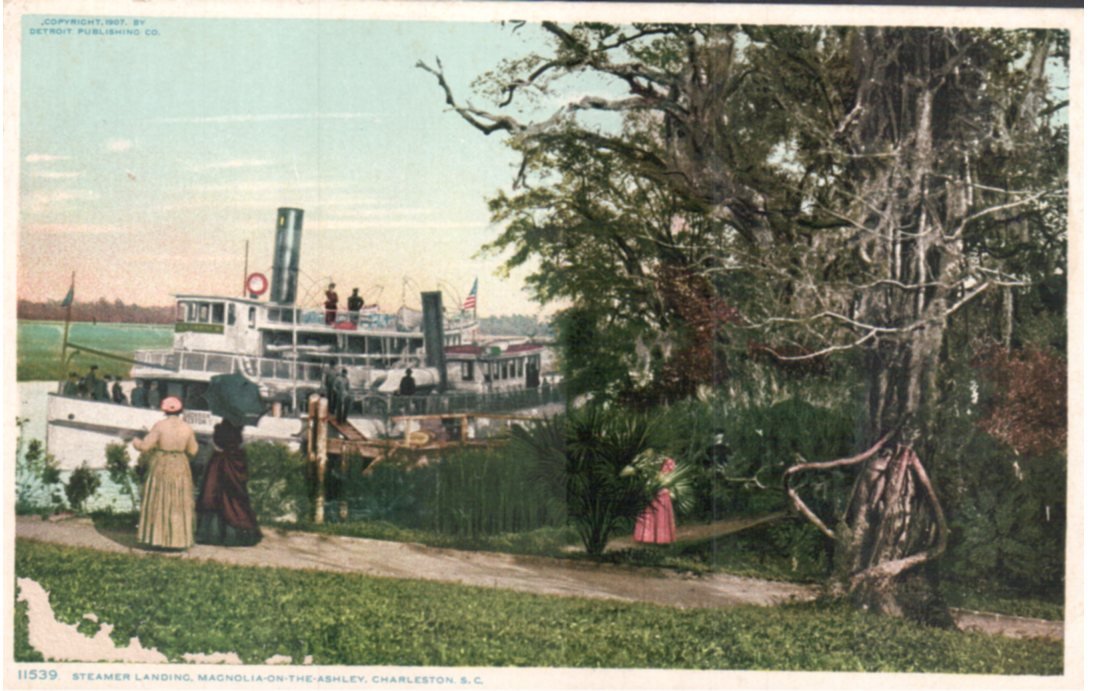Magnolia’s First Public Visitors Arrived by Steamboat
Five years after the Civil War ended, the Rev. John Grimké Drayton opened his private gardens to the public. He had planted the gardens in the 1840s for his wife, who wasn’t especially thrilled to move from Philadelphia to what was then the middle of nowhere. He hoped the gardens would bring her joy in their new home.
After the war, the Rev. Drayton believed the best way to preserve the gardens at Magnolia was to open the space to the public.
Those earliest visitors traveled by steamboat up the Ashley River from Charleston, docked at Magnolia and, for a fee, took a guided tour of the grounds or simply wandered the grounds at their leisure. Visitors were greeted at the dock by either the Rev. Drayton himself or one of the gardeners (formerly enslaved at the plantation but now freed). These ventures to the gardens became known as “Excursions Up the Ashley” or “Magnolia Garden Excursions.”
The destruction of the City of Charleston during the Civil War proved to be intriguing to those from other parts of the country. However, for those who lived in the city, a trip to see the gardens offered a few hours of escape from the destruction and devastation.
In 1871, Magnolia (and Charleston) was featured in the publication, “Picturesque America,” a two-volume publication that highlighted unique scenery and destinations in America.
For that first decade, visitors traveled to Magnolia via steamboat. Eventually, they were able to travel via rail.
According to newspaper advertisements from the late 19th century, a round-trip ticket in 1885 cost $1.25 for adults and 75 cents for children.

